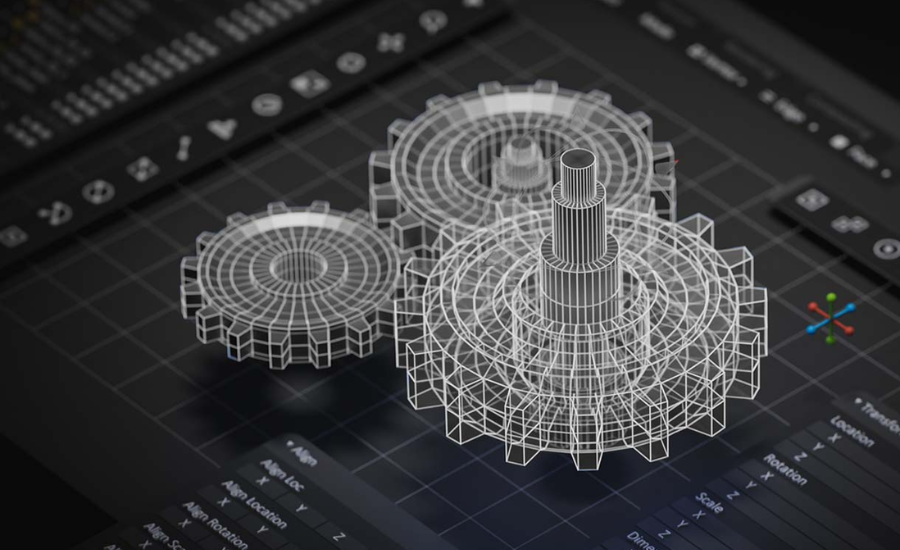Design for Manufacturability (DFM) has become a game-changer in the modern production. With increasing demand for custom, high-quality products and shorter timelines, manufacturers are turning to DFM to streamline operations without compromising quality. From injection molding to 3D printing, DFM ensures that designs are innovative and optimized for efficient and cost-effective production.
What Is Design for Manufacturability?
At its core, DFM is the process of designing products in such a way that they are easy and cost-effective to manufacture. It involves optimizing the design to minimize complexities and eliminate manufacturing inefficiencies right at the beginning of the development cycle.
By factoring in manufacturability early on, companies can reduce waste, save money, and avoid costly design revisions later in the process. DFM offers a structured way to bridge the gap between innovative design and practical production.
Why Is DFM Significant?
- Boosts Manufacturing Efficiency – Streamlined designs ensure smoother production workflows.
- Reduces Costs – Accounting for potential challenges upfront helps avoid expensive modifications later.
- Shortens Time-to-Market – Designing with manufacturing in mind leads to faster turnaround times.
Key Principles of DFM
1. Design Simplification
The more complex a design, the more prone it is to errors and higher manufacturing costs. Design simplification focuses on reducing unnecessary features and parts while maintaining the overall functionality and aesthetics of your product. This not only cuts production time but also reduces assembly risks in multi-component products.
Example: Combining two or more parts into a single component via advanced forming processes can eliminate extensive assembly and fasteners.
2. Material Selection
Material plays a critical role in product manufacturability. Choosing the right material involves balancing factors like cost, strength, weight, and availability. Materials should be selected based on how well they complement the manufacturing process, as well as their end-use applications.
Example: For commercial metal forming, selecting ductile metals with high formability makes processes like stamping or deep drawing far more efficient.
3. Standardization
Using standard components, hardware, and design templates ensures compatibility and reduces the need for custom tooling. Standardization also simplifies assembly and enhances production repeatability.
Example: A CNC machining project with standard holes and threads (e.g., M6 screws) is far more efficient than projects requiring unique specifications.
The Role of DFM in Reducing Costs and Time-to-Market
Lower Production Costs
- Material Waste Reduction: By optimizing material usage, manufacturers can save on raw material costs.
- Minimized Assembly Complexity: Simplified designs require less workforce intervention, cutting labor costs.
Faster Time-to-Market
- Reduced Prototyping Cycles: Designs optimized for manufacturability lead to fewer rounds of prototyping.
- Smarter Tooling Decisions: Efficient designs eliminate unnecessary tooling steps, saving time.
For businesses dependent on processes like injection molding or 3D printing, DFM ensures that designs flow seamlessly into production, cutting down lead times by as much as 30-50%.
DFM Guidelines for Various Manufacturing Processes
Injection Molding
- Maintain Uniform Wall Thickness: This avoids sink marks and ensures even cooling.
- Draft Angles for Easy Release: Add 1-3 degrees of draft to make part removal from molds easier.
- Avoid Sharp Corners: Rounded corners reduce stress concentration and make the molding process smoother.
CNC Machining
- Optimize Tool Access: Design parts that minimize tool changes and streamline machine paths.
- Limit Small Features or Intricate Details: Excessively small or intricate shapes can result in longer machining times and higher tool wear.
- Use Standard Tolerances: Extreme precision tolerances drive up both time and cost unnecessarily.
3D Printing
- Account for Support Structures: Keep overhangs at a minimum to reduce the need for support
- Optimize Part Orientation: Design parts so that their orientation in the printer minimizes material use and improves strength.
- Choose the Right Filament or Powder: For example, use PLA for prototyping but opt for carbon fiber-infused materials for functional parts.
Future Trends in DFM
As manufacturing becomes more interconnected and intelligent, the role of DFM is also evolving.
Industry 4.0 and Smart Manufacturing
The rise of Industry 4.0 is driving the integration of IoT and AI into DFM workflows. Real-time data collected from production machinery can feed into DFM tools, allowing dynamic adjustments to designs based on live manufacturing feedback.
AI-Powered Optimization
Artificial intelligence, combined with machine learning, can now refine designs automatically. It analyzes past success rates and creates iterative improvements, letting teams explore efficient configurations quickly.
Sustainable Design Practices
Sustainability is becoming a priority in product development. DFM now incorporates eco-friendly principles like material recyclability, production energy savings, and waste minimization.
The Role of Additive Manufacturing
3D printing, or additive manufacturing, is bridging the gap between prototyping and end-use production. With advancements in multi-material printing, DFM guidelines are also adapting to these new fabrication capabilities.
Conclusion
Design for Manufacturability isn’t just a nice-to-have. It’s a strategy that ensures more efficient production, better designs, and faster turnaround times. By following our DFM principles—like simplifying designs, standardizing processes, and leveraging advanced tools—you can reduce costs, avoid bottlenecks, and gain a true competitive advantage in your industry.
Stay informed and up-to-date by staying in touch with us regularly: Nhentainef!
